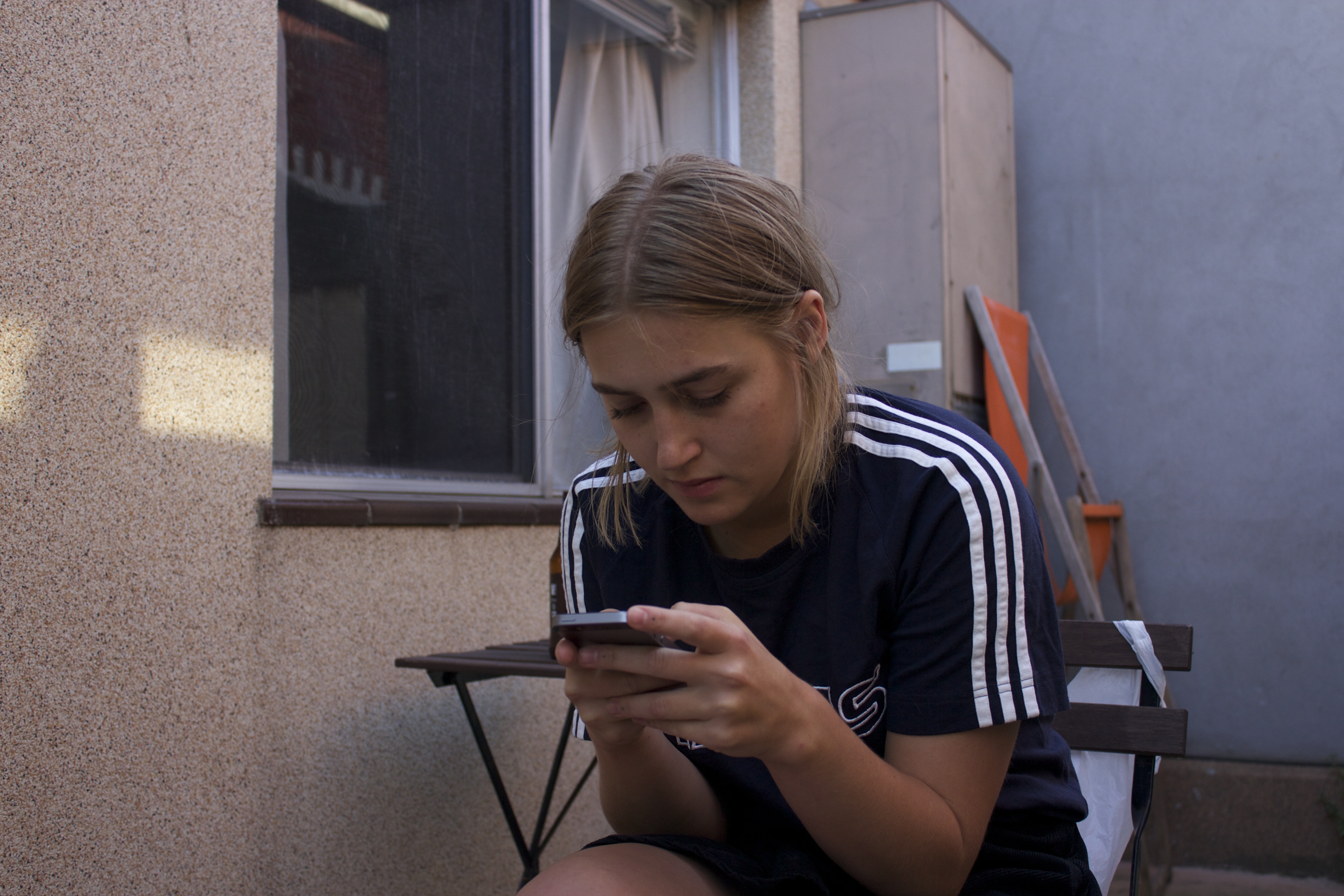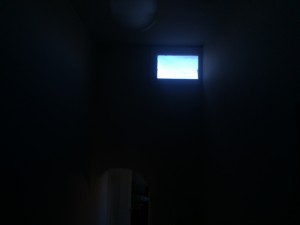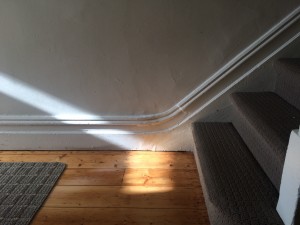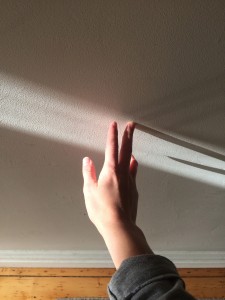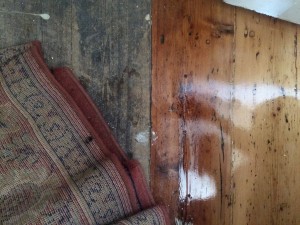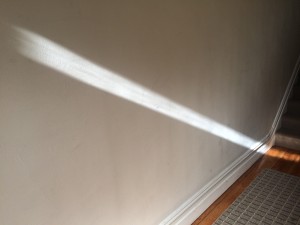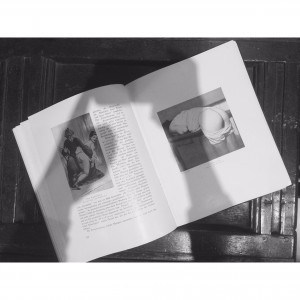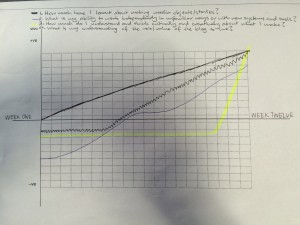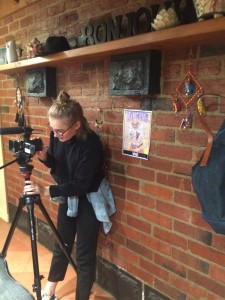I’ve found this assignment a really interesting one to complete. To grab material I found myself rolling around on my floor; trying to catch the way the light was bouncing off of my ceiling in a new way, I was inside the cupboard under the stairs at one point; trying to see if from under there, my full house might sound a bit calmer, I sat at the top of the stairs looking down at the front door – seeing this part of my house for the first time from that position. When I first begun the assignment, I thought I had a pretty clear idea of what I would be able to capture, and what I’d be handing in. And look at that, I was able to see my place from a few new angles.
In the class discussion, as we went around and discussed on what elements we’d be focussing through this assignment, I noted how we had recently moved in to a freshly painted and renovated old Melbourne townhouse, it was during this discussion that Robbie reminded me how even a freshly painted and empty house holds the ghosts and stories of the past. And he was so right. I guess this is what I wanted to look at through this project – that although we, the housemates, are new to this place, this place is not new. I was drawn to the corners of the house we can’t reach, to put our own marks, stories and personalities on; the corners up high where the house still holds its own as the primary story teller. I was drawn to the areas where polished floorboards and 100 year old floorboards, who’d been hidden under carpet for the last 60 years, met and allowed their beaten surface to tell a story of time and wear and durability. A story whose origins I’ll never know.
I wanted to explore the concept of used and unused space, and the way we ‘use’ space by turning lights on, or leaving windows open. Isn’t it an interesting thing we do when we want to use a space, we cram it with things – chairs, rugs, televisions; I wonder whether spaces can’t be perfect as they are, just to have the afternoon sun moving through, as it bids farewell for another day. In this assessment I have discovered new parts of my room to sit in the afternoon where I can have the perfect front row seat to the sun and the dancing of its shadow.
In the sound element of this project, I just spent the day around the house and moved from room to room. Some recordings are from the empty room in a full house, while other recordings were from times the house was empty. I wanted to emphasise feelings of isolation and saturation, feelings oft discovered in busy share houses. What a weird concept to pull 5 (somewhat) completely different people, from all over the place, under one roof and attempt to make it a functioning unit.
I removed the colour from the videos to highlight shadows and insignificant movement.
